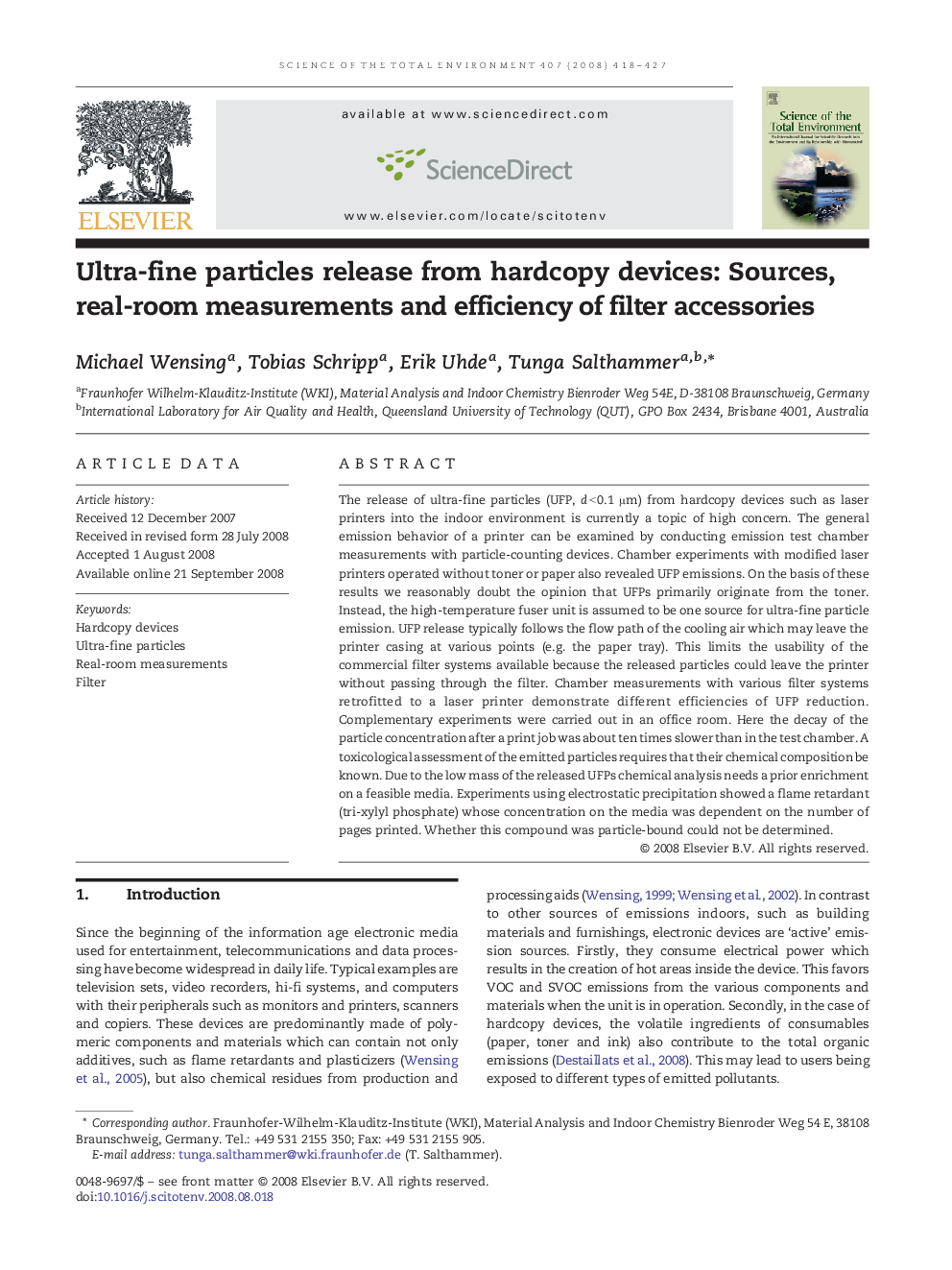| Article ID | Journal | Published Year | Pages | File Type |
|---|---|---|---|---|
| 4432498 | Science of The Total Environment | 2008 | 10 Pages |
The release of ultra-fine particles (UFP, d < 0.1 µm) from hardcopy devices such as laser printers into the indoor environment is currently a topic of high concern. The general emission behavior of a printer can be examined by conducting emission test chamber measurements with particle-counting devices. Chamber experiments with modified laser printers operated without toner or paper also revealed UFP emissions. On the basis of these results we reasonably doubt the opinion that UFPs primarily originate from the toner. Instead, the high-temperature fuser unit is assumed to be one source for ultra-fine particle emission. UFP release typically follows the flow path of the cooling air which may leave the printer casing at various points (e.g. the paper tray). This limits the usability of the commercial filter systems available because the released particles could leave the printer without passing through the filter. Chamber measurements with various filter systems retrofitted to a laser printer demonstrate different efficiencies of UFP reduction. Complementary experiments were carried out in an office room. Here the decay of the particle concentration after a print job was about ten times slower than in the test chamber. A toxicological assessment of the emitted particles requires that their chemical composition be known. Due to the low mass of the released UFPs chemical analysis needs a prior enrichment on a feasible media. Experiments using electrostatic precipitation showed a flame retardant (tri-xylyl phosphate) whose concentration on the media was dependent on the number of pages printed. Whether this compound was particle-bound could not be determined.
